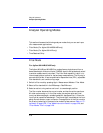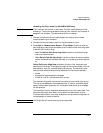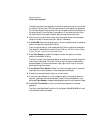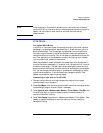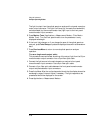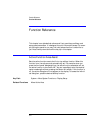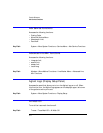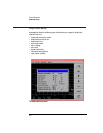
2-37
Using the Instrument
Analyzer Operating Modes
Time Resolved Chirp
For Agilent 86146B option TRC only
The Agilent 86146B, with the filter mode capability, will measure side mode
suppression ratio (SMSR), wavelength, and power. With the addition of an
Agilent 86100 Infinium Digital Communications Analyzer (DCA), dedicated
software (86146B Option TRL), and a personal computer, time resolved chirp
(TRC) of a modulated laser can be calculated.
TRC provides frequency (or wavelength) vs time information about a modu-
lated lightwave signal. Also called dynamic chirp, the TRC graph provides use-
ful information on the ability of a modulated signal to propagate over long
distances in optical fiber. In dense wavelength division multiplexing (DWDM)
systems, excessive chirp also can cause inter-channel interference. The two
significant factors of chirp are:
• dispersion which is a function of the transmission link’s length and fiber type
• cross talk caused by chirp due to closely spaced channels
A measurement could show the modulated signal (square wave) and the
chirp. The chirp fluctuates with time and the frequency change, seen at the
falling and rising edge of the time domain. The time resolved chirp solution
measures:
• intensity versus time
• frequency versus time
• calculates the alpha factor
The alpha factor is also referred to as linewidth enhancement factor. One defi-
nition of
α is:
During initialization, the instrument does an auto peak, gathers information
about the peaks, and tunes the filter marker. The unmodulated data in shown
in the square wave pattern and the chirp is the frequency which runs through
the square wave pattern.
To smooth the chirp signal, increase the averages taken which will decrease
the noise found on the signal. Increasing the number of averages and using the
longer patterns will increase the measurement processing time. To shorten
the measurement processing time, either increase the power or decrease the
number of averages. See the TRC Option User’s Guide for more details.
α 2P ∆f()∆p()⁄=




